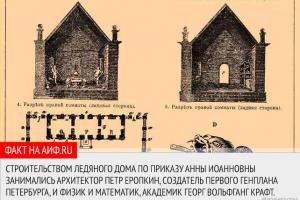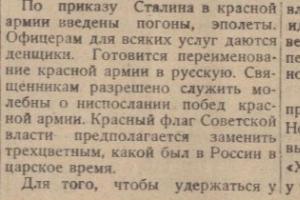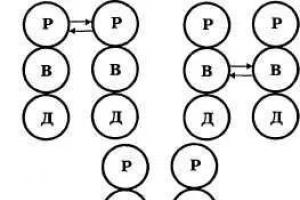Nowadays, foam concrete and aerated concrete have become widely popular in construction. Aerated concrete is modern material, which has heat permeability and vapor permeability. The opinion of manufacturers is that insulation of aerated concrete walls is not required. However, is this really so? I will talk about the reasons, choice and process of insulation in this article.
Do I need to insulate the walls?
To figure out whether it’s worth insulating your home, you need to highlight several factors:
- Take account climate zone your residence;
- Determine the density and thickness of the blocks;
- Determine the thickness of the seams between the blocks.
I can say that the best option– this means thinking about insulation at the stage of wall construction. This is explained by the fact that laying blocks on cement and thick seams (they are called “cold zones”) can lead to heat leaving the house. To prevent this from happening, the blocks must be laid on special glue, and the seams should be made no more than 3 mm.
If the thickness of the blocks themselves exceeds 375 mm, then only cladding can be done. In this case, two conditions must be met: the blocks are not too dense, and the seams are made perfectly.
Your home needs insulation if:
- High-density aerated concrete (more than D500) was used during construction;
- low-density aerated concrete (below 300mm) was used during construction;
- during construction, the supporting frames were filled with aerated concrete blocks;
- very thick seams are used;
- When laying the blocks, not glue was used, but cement mortar.
All these factors together make it clear that it is necessary to think about thermal insulation so that there is no cold and discomfort in winter.
Related article: Moroccan style in the interior photo. Interior in Moroccan style
Choice of insulation
There are several types of material for insulating aerated concrete walls.
Mineral wool (glass wool and stone wool) is made from glass fibers in the industrial processing of waste from the metallurgical industry and silicate minerals. Mineral wool is environmentally friendly, vapor-permeable and does not burn.
Expanded polystyrene is easy to use. The material is waterproof, inexpensive, but does not have particularly high sound insulation properties. It is vapor proof and not as fire resistant as mineral wool.

Polyurethane foam The material has high thermal insulation properties and is easy to apply.
There are also: extruded polystyrene foam, foam glass and slabs of wood and cork. These materials are not so common, and if you have decided to insulate with them, then it would not be superfluous to consult a specialist.
You can insulate walls using regular plaster with the addition of sawdust or expanded glass. The material is relatively cheap, comfortable and practical. The main disadvantage: aerated concrete with such insulation loses its “breathing” properties.
When choosing insulation, you need to determine: do you need a vapor-tight or vapor-permeable wall? If the first, then you need polystyrene foam, if the second, cellular concrete. When working with polystyrene foam, it is worth making ventilation both for exhaust and for air intake.

Vapor-permeable paints, plasters, facing bricks, lumber and siding are very popular.
Where to insulate - outside or inside?
There are two ways to insulate a house. Inside and out. Many experts do not recommend insulating walls from aerated concrete, explaining that it is a “breathable” material. It stores heat very well, and conventional insulation materials are often inferior to it in their vapor permeability. It is also worth remembering the danger of moisture appearing between the wall and the insulation, which can result in the formation of fungus. Therefore, in order to prevent this, the vapor permeability of the insulation must be higher than the aerated concrete blocks.
Related article: Drywall niche for curtains - features and advantages
When insulating your home you:
- better retain heat in the house;
- get better sound insulation;
- protect porous blocks from moisture;
- take care of the aesthetic side, due to the fact that the blocks themselves do not have a very “marketable” appearance.
We insulate the house from the outside
Insulation concrete walls outside is a more popular option. The two most common types of insulation are mineral wool and polystyrene foam. Sufficient thickness – 5 cm.

Installation of insulation on a wall made of aerated concrete
When insulating a house with polystyrene foam, do not forget that this material will not allow the wall to “breathe”, so you need to take care of ventilation. And this pleasure is not cheap. If the vapor permeability regime is disrupted, condensation may occur between the wall and the insulation. Therefore, when the humidity is high enough, it is not recommended to work with polystyrene foam.
Important! When insulating walls made of aerated concrete, follow the rule: a lower level of vapor permeability inside – a higher level outside.
We insulate from the inside
This option is partly more convenient than the first, because damaged material can be replaced fairly quickly. When insulating, you should work extremely carefully with the material, making sure that there is no displacement. Otherwise, thermal insulation from the inside is carried out using the same materials and in the same sequence as the outside.

At the same time, this method has serious disadvantages: the area of the room is reduced, and the threat of fungi appears.
My advice is this: if it is possible to insulate walls made of aerated concrete both outside and inside, choose the first option.
Installation of insulation on walls
For insulation you need to have a set necessary tools and materials:
- thermal insulation material;
- special glue that will attach the sheets to the walls;
- dowels (“umbrellas”) – if you need to attach mineral wool mats;
- fiberglass mesh;
- any container for preparing the adhesive mixture;
- building level;
- notched spatula;
- perforator;
- perforated corners.
Today, the construction of private houses from aerated concrete blocks is becoming increasingly popular. Aerated concrete blocks have a rather interesting porous structure, which has low thermal conductivity, but are susceptible to moisture. This determines the use of a small amount of thermal insulation layer, usually one or two. This is enough for the severest frosts in winter season is a necessary condition to protect blocks from destructive effects environment. How to insulate a house made of aerated concrete?
Insulation of a house made of aerated concrete
Is it necessary to insulate a house made of aerated concrete? It’s no longer a question, but how to do it correctly? Experts recommend insulation from the outside of the house. This will avoid unnecessary waste of usable space, and will also provide additional protection to the external walls of the house and the transition of the “dew point” to the external walls. Dew point - temperature limit, in which the cooling air reaches a state of saturation and condenses into dew. In addition, you should not experiment with the thickness of the aerated concrete wall, so the option of 300 millimeters disappears immediately. According to the recommendations of experts, 375 millimeters is the minimum thickness of the walls of a private house made of aerated concrete! This is minimal permissible norm, taking into account the use of insulation.
Before you begin insulation, you need to select the insulation material and make a calculation of the amount of material that will be required during the work process. The choice of insulation material should be taken responsibly, because this factor will determine the final cost of the work, installation method, as well as quantitative consumption insulation material. But before choosing an insulation material, you need to decide on the option for insulating a private house.
Options for insulating a house made of aerated concrete blocks:
- From the inside. In any case, with this method, living space will suffer, which can be used in a more effective and efficient way. In addition, you will need to install a rather expensive ventilation system, but even this will not save you from the appearance of fungi and mold in the space between the insulation and the aerated concrete wall.
- Outside . It is recommended to insulate the outside walls of the house from the outside. This method is used not only for additional protection walls from precipitation or scorching sun; this method of insulation saves time due to relatively easy installation, no creation required extra space for the execution of work. In addition, if it is necessary to change the facade of the house, this can be done without unnecessary complications. In addition, external insulation provides additional sound insulation and gives the house a more attractive appearance.
Insulation process

What type of insulation to choose, how to insulate and what may be required for this? It is necessary to take into account the fact that aerated concrete has vapor-permeable properties. Therefore, in order to properly insulate the walls of a house made of aerated concrete from the outside, the insulation must have a vapor permeability higher than aerated concrete blocks. Otherwise, moisture will begin to accumulate in the internal walls, which will gradually lead to their destruction or costly restoration. The most used materials as insulation for external walls aerated concrete house are mineral wool and polystyrene foam.
Important! A necessary point that should be taken into account when insulating a house is the influence of rodents. Small dirty tricks do not come close to mineral wool and simply adore polystyrene foam. They gnaw at it, forming burrows in it, so the façade must be completely covered with plaster to prevent the appearance of a family of rodents.
How to properly insulate with polystyrene foam?

Polystyrene foam does not allow steam to pass through, so when choosing such insulation, you should take care of a high-quality air ventilation system. But the undoubted advantages of using polystyrene foam include its low cost (almost several times cheaper than mineral wool).
Work order:
- Irregularities that arise over time or due to manufacturing defects should be leveled out;
- Fiberglass mesh needs to be glued near the windows. It is attached in such a way that there is at least 10 centimeters of mesh under the outer layer of insulation, and it is also possible to glue about another 10 centimeters on top of it. This procedure is performed for additional reinforcement;
- Special glue is applied to the foam sheet (experts recommend using a notched trowel to ensure uniform application and coverage of the entire surface of the foam);
Is it possible to insulate with mineral wool?

Mineral wool as an insulating material is much more practical than polystyrene foam. Of course, it has a higher cost, but it also has a number of undoubted advantages: high strength and vapor permeability. This material is recommended to be used to maintain a stable level of humidity and a comfortable microclimate in a private home. The working life of the insulating material without loss of operational features is more than 50 years. Mineral wool insulators are produced in the following versions: some are in the form of slabs, others are produced in the form of rolls. For ease of installation, the slabs are produced in sizes of 500*1000 millimeters.
Work order:
- External walls must be cleaned of dust and dirt. For this, aggressive detergents, a stiff brush and a metal sponge are used;
- Wall insulation mineral wool will require special glue;
- Additional fixation is provided by the use of plastic dowels;
- After the mineral wool has dried a little, a fiberglass mesh is attached to it, which will subsequently protect the walls from cracks in the paint or plaster;
- Another layer of glue is applied on top of the fiberglass mesh;
- It is recommended to start plastering and painting the insulating material after the glue has dried.
Other materials used for insulation
In addition to mineral wool and polystyrene foam, penoplex (extruded polystyrene foam) and polyurethane foam can be used as insulation. Insulating aerated concrete from the outside with penoplex significantly reduces heat loss due to its low thermal conductivity coefficient. In addition, this material is suitable for installation on any surface. Polyurethane foam as insulation on the outside of the house forms foam when it begins to interact with the insulated surface.
Finishing of aerated concrete blocks

Aerated concrete blocks are several times larger than wooden materials by vapor permeability. This is one of several reasons for the popularity of aerated concrete blocks. But violations made during installation or operation can affect vapor permeability. Aerated concrete walls for siding – perfect solution by application finishing materials. Sometimes aerated concrete blocks can be hidden behind brick wall, decorative tiles or plaster mixtures. The work becomes easier when it turns out that an extended foundation was used to build the house. When refining appearance When using bricks, remember to create ventilation holes.
Finishing from the inside. Work order:
- A primer material is applied on top of the insulation;
- The plaster is applied after the primer has dried;
- It is recommended to smooth the walls after the plaster has dried. This stage is carried out 2 times in a row (the interval between repetitions is a day);
- The wall is insulated using internal facing material– drywall using a special adhesive solution. Pre-prepared wooden frame from slats, and plasterboard panels are mounted on them, which are subsequently painted with vapor-permeable paint.
An alternative to using aerated concrete blocks

It is most rational and effective to provide insulation of aerated concrete with penoplex, mineral wool or polystyrene foam at the stage of building a house. It is better to insulate the house at the very beginning than to carry out the work later, when the labor intensity will increase several times. But the most common mistake when building a house is laying aerated concrete blocks on concrete mortar. After all, it is he who lets the cold through. Outside air enters the house through the seams, increasing heating costs.
Possible variant effective styling– a special adhesive base, the thickness of which does not exceed three millimeters. The better the roof, window openings and foundation are insulated, the better. After all, these objects are insulated at the very beginning of construction.
Afterword
Now you are probably wondering: is it necessary to insulate a house made of aerated concrete and what materials should be used? Of course you need it! After all, an insulated house built from aerated concrete has a number of advantages: the relative ease of performing the work, which does not require special skills, low cost and high thermal insulation of the walls provide residents of a private house with a fairly comfortable stay. But to eliminate possible troubles associated with climatic conditions and the manifestation of the vital activity of rodents, the best solution is the insulation of aerated concrete with polystyrene foam, penoplex or mineral wool.
One of distinctive features aerated concrete – its high thermal insulation properties. This is achieved by introducing into the composition concrete mixture special foaming agent (aluminum powder or powder can be used). The released hydrogen bubbles are eventually distributed evenly throughout the entire volume of aerated concrete. Compared to ordinary concrete, aerated concrete conducts heat much worse.
It would seem that, additional insulation such material will not be required, but this assumption is not always correct. Perhaps only in warm climates and very mild European winters will no additional thermal insulation be required. In all other cases, it is desirable to insulate aerated concrete both inside and outside the building. In this case, many factors must be taken into account when choosing a thermal insulation material and work technique.
How to insulate a house made of aerated concrete
When insulating walls made of aerated concrete, you can use many materials, from ordinary plaster to special “breathable” materials with high thermal insulation properties. The following materials are used:
- ordinary plaster(with the addition of fillers such as sawdust, perlite, expanded glass). The advantages of this material include low cost, convenience and practicality. The main disadvantage is the loss of the “breathing” properties of aerated concrete. Compared to mineral wool and other thermal insulation materials, they have low efficiency;
- Styrofoam(expanded polystyrene). Its vapor permeability is at least 3 to 10 times less than the vapor permeability of aerated concrete, so foam plastic is used for insulation only as a last resort.

In humid climates, insulating a home with polystyrene foam is not recommended. The fact is that moisture will accumulate between the surface of aerated concrete and foam plastic, which will ultimately lead to rotting of the aerated concrete blocks.
- mineral wool. The vapor permeability of mineral wool is even higher than that of aerated concrete, so insulating walls made of aerated concrete using this material allows you to maintain a given microclimate in the room. Most often, mineral wool is used for insulation;

- polyurethane foam. Combines ease of application and high thermal insulation qualities.

Polyurethane foam is applied to the surface of aerated concrete by spraying. This creates a seamless insulation surface.
Methods for insulating aerated concrete walls
There are several methods for performing external sealing of aerated concrete walls; depending on this, the composition of the required tools and materials varies. The following technologies are distinguished:
- . A separate frame (metal or wood) is created, in the cells of which heat-insulating material is placed. Then it is covered with decorative elements.

- Wet façade technology(easy option). Plates of thermal insulation material are attached with glue and plastic dowels, then the surface is plastered in 2 layers with a reinforcing mesh placed between them.

- Heavy version of “wet” technology. In this case, you will have to widen the foundation. The insulation is attached to the aerated concrete wall using powerful hooks. Then the surface of the insulation is plastered with simultaneous mesh reinforcement. After the plaster has dried, the wall is covered natural stone or other material.

From the point of view of efficiency and cost, it is the lightweight version of the “wet” insulation technology that is preferable.
Materials and tools for insulating a house made of aerated concrete
To insulate a house made of aerated concrete you will need:
- thermal insulation material (foam sheets or mineral wool in the form of hard mats);
- special glue;
It is better not to try to save money and use cheap adhesive mixtures; in the future, this may cause the mineral wool to peel off from the wall.
- “umbrella” dowels (for additional fastening of mineral wool mats);

- fiberglass mesh;
- container for preparing the adhesive mixture;
- perforated corners;
- building level;
- notched spatula;
- hammer drill
Technology for insulating a house made of aerated concrete from the outside
Even before starting work, it is necessary to decide on the heat-insulating material; the technology for performing the work will depend on this. The main thing you need to pay attention to is the purpose of the building, as well as the vapor permeability of aerated concrete blocks and heat-insulating material.
You should not try to save on the thickness of the heat-insulating layer. The fact is that the costs of glue and other materials will remain almost unchanged, but thermal insulation characteristics will fall significantly
The work is carried out in several stages:
- Preparatory stage. The wall surface is cleaned of dirt and dust, possible defects are repaired with ordinary cement mortar. If the area of the defect is large, then “breathing” plaster mixtures can be used to correct it. For better adhesion of the glue to the wall surface, you can use a primer.
- A frame is mounted at the base level, which will serve as a support for the insulation mats.

- Vertical beacons are placed at the corners of the house.
- The insulation is attached to the wall using special glue. It is recommended to apply glue along the perimeter of the mineral wool (or polystyrene foam) slab and in several strokes in the center.

It is allowed to apply the adhesive mixture over the entire surface of the slab using a notched trowel. Cross-shaped joints should be avoided; for this, each subsequent row of slabs is shifted relative to the previous one. Quite often, plastic umbrella dowels are also used to strengthen the connection between the slab and the wall. They are located in the corners and in the center of the slab.

Gaps between slabs should be avoided. The presence of gaps (so-called “cold bridges”) significantly reduces the effectiveness of insulation
- Mineral wool is pretty soft material, fiberglass mesh is used to give it rigidity. Glue is applied to the surface of the insulation with a spatula, then a mesh is placed (overlapping, the overlap should be at least 10 cm), and another layer of the adhesive mixture is applied on top of the mesh.

- After reinforcing the insulation, it is necessary to further strengthen the corners of the building, window and door openings. To do this, perforated corners are glued to the corners.
- After this, the surface is either primed and plastered (in 2 layers) or a layer of putty is applied and then the walls are painted.
If you plan to arrange curtain façade, then even before gluing the insulation, you need to mount a frame on the wall, onto which the facade panels will then be attached.
A well-insulated aerated concrete house will not only make you feel cozy and comfortable during the cold season, but will also help you save on heating bills.

Insulating a house made of aerated concrete is not mandatory, but in some cases it is very desirable. In this article we will try to explain: why insulate aerated concrete; what to choose, polystyrene foam or mineral wool; what thickness of insulation to use; when to carry out insulation.
At first glance, it seems that there is only one reason - to save money on heating, but let's look at this in more detail.
Reasons for insulating aerated concrete:
- Reduced heat loss through walls, as the thermal resistance of the wall increases, resulting in lower heating costs.
- Closing cold bridges in walls, such as armored belts, lintels, thick seams. Not only do they cause heat to escape from the home faster, but they can also become wet areas in the home where mold can grow.
- Increasing the durability of the building. External insulation of aerated concrete with a thickness of 100 mm or more transfers the dew point from the wall itself to the insulation, that is, freezing of moisture in aerated concrete will not occur, which will make the service life of aerated concrete much longer.

Is it profitable to insulate aerated concrete or not? If we consider the economic feasibility of insulation, then we need to find out the payback of insulation. That is, how long will it take for savings on heating to pay for the insulation itself?
If the payback period for insulation is more than 10-15 years, then there is no point in such insulation; it is more profitable to put money on deposit in a bank.
But there are also cases when insulation is very beneficial:
- If gas and electricity are very expensive.
- If the house is located in a cold region.
- If the wall thickness is less than 300 mm.
- If the walls are made of high-density aerated concrete D600 and higher.
- If the walls have thick seams and many cold bridges.
To determine the thickness of the insulation, you need to find out what the required thermal resistance of the walls is needed for your region, and how long it will take for the insulation to pay for itself.
It happens that people insulate their houses with a thin layer of insulation of 40, 30 and even 20 millimeters. Which is a big mistake in terms of feasibility and payback. The thicker the insulation layer, the lower heating costs will be in the future.

It is worth understanding that the cost of glue, foam, dowels, mesh, plaster and labor do not depend on the thickness of the insulation. That is, there will not be much savings on materials and work between thicknesses of 30 mm and 100 mm. But the insulation will differ significantly. Therefore, it’s definitely not worth saving on the thickness of the insulation.
Moreover, in order for the dew point to move from the wall to the insulation, the thickness of the insulation should be about 100 mm.
Optimal, economically justified thickness of insulation for aerated concrete walls is 100 mm.
If the walls of the house are made of high-density blocks from D600 and higher, or if the wall thickness is only 200, then 150 mm of insulation can be used.
Aerated concrete walls cannot be insulated immediately after their construction. The fact is that fresh factory aerated concrete is very wet, and this moisture must evaporate somewhere. Moisture comes out of the thickness of the wall both inside and outside the house, but what happens if you cover the outer part of the wall with insulation, for example polystyrene foam? All moisture will remain in the wall and will go inside the house, creating high humidity, mold and other inconveniences there.

It is worth noting that a damp wall retains heat in the house worse, and when negative temperatures the water in the wall turns into ice, slightly reducing the service life of aerated concrete.
Things are better with mineral (stone) wool, because it has good vapor-permeable properties and removes excess moisture. But then the aerated concrete itself is protected from the wind and takes much longer to dry. Plus, the mineral wool itself becomes more humid, worsening its thermal insulation properties.
In general, before insulating aerated concrete with mineral wool, you need to wait 2-6 months, and for foam plastic it is better to wait 6-12 months.
The drying speed of aerated concrete is influenced by the following factors:
- Wall thickness
- Air temperature
- Precipitation
- Force of blown meters
To insulate an aerated concrete house, mineral wool and polystyrene foam are usually used. For the impatient, we will answer right away - mineral wool is more expensive and better, polystyrene foam is cheaper and worse. Now let's try to figure out why this is so.

Mineral wool has excellent vapor permeability and removes excess moisture from the house and walls to the street. The vector of movement of water vapor is always directed from inside the house to the street.
This ensures a good microclimate in the house and the walls remain dry, and dry walls retain heat better. Moreover, mineral wool is absolutely non-flammable. Mineral wool slabs are more difficult to process and it is necessary to work with goggles, protective clothing, gloves and a respirator.
In terms of thermal insulation, wool and foam have almost the same properties.
Polystyrene foam is cheaper, easier to work with, it is easy to cut, and the cracks are filled with foam. Polystyrene foam is a flammable material and almost does not allow steam to pass through, which contributes to the accumulation of moisture in the walls and high humidity in the house. A house insulated with foam requires good ventilation, and intense ventilation blows heat out of the house.
Recuperators come to the rescue - special fans that heat the air entering the house using the heat of the exhaust air.
In general, mineral wool has important advantage- vapor permeability, and for an aerated concrete house it is best choice. But if finances are putting a lot of pressure on you, you can also use polystyrene foam, but only with a thickness of 100 mm or more, so that the dew point in the insulation is + good ventilation in the house.
Schemes for insulating aerated concrete with stone wool



Foam insulation technology
Mineral wool insulation technology
Aerated concrete- a durable and lightweight material that has been used throughout construction for decades. Its main advantages are high thermal insulation rates. Yes, the wall is thick 30 cm. according to this indicator corresponds brick wall 60 cm wide. Despite these characteristics, insulating a house from aerated concrete is a common practice. When should such work be carried out and what materials are used?
Aerated concrete house in Riga, built in 1939
There is no urgent need for insulation of aerated concrete houses, especially when it comes to thermally efficient brands building material. This is explained by the cellular structure of the building material, consisting of sand, cement, lime, water and aluminum powder. The components are mixed and placed in an autoclave. There they foam under the influence of corrosion of aluminum powder. The reaction proceeds with the release of oxygen, which forms porosity in the concrete.
 The energy efficiency of the material is due to its cellular structure
The energy efficiency of the material is due to its cellular structure
But still, most often in the harsh conditions of the Russian climate, one cannot do without such finishing. Factors that make work necessary include:
- Failure to comply with masonry technology when large seams are formed. They are so-called cold bridges, where the thermal resistance is reduced. This also degrades the thermal efficiency of the building.
- Use in the construction of blocks with a density of D500 or more.
- Walls up to 30 cm thick (numbers are also called 64 cm, which makes the material not so energy efficient).
- Filling only load-bearing frames with gas blocks.
Living in regions with a harsh climate is also a condition for insulating walls made of aerated concrete. An additional layer of thermal insulation will help reduce the thickness of the walls and the load on the foundation, reducing the cost of building construction.
Several materials are used to insulate a house made of aerated concrete.
 After the construction of the building you must wait at least 2 months
After the construction of the building you must wait at least 2 months
- mineral wool;
- expanded polystyrene (foam);
- penoplex;
- polyurethane foam insulation.
Each of them has its own advantages and disadvantages. The insulation technology is also different.
 Methods for insulating aerated concrete walls
Methods for insulating aerated concrete walls
Insulation of a house is most often done when it has been in use for some time, and it turns out that its thermal conductivity is higher than expected. But often such work is carried out during the construction stage. Then they don’t do the insulation right away. First, the entire box is completely lined up. Then they wait from 2 to 5 months so that the walls dry out and remove excess moisture from blocks.
Insulation of aerated concrete house outside and inside
Insulation of buildings is carried out inside and outside.
Positive aspects of insulation:
- the energy efficiency of the building increases;
- less thermal energy required;
- the building is better protected from heat in summer;
- heating costs are reduced in winter;
- sound insulation improves;
- the life of the building is extended.
External insulation
The benefit of such insulation is that the dew point moves outward. As a result, the effect of “cold bridges” is minimized. They usually occur near floor slabs, lintels, and armored belts. Thermal insulation on inside the wall does not allow condensation to occur.
When insulating a house, the main thing is to correctly calculate the thickness of the insulation. This can be done using special calculators, which contain all the necessary parameters, including the region of residence.
 At proper insulation dew point moves outward
At proper insulation dew point moves outward
Insulation from the inside
Insulating walls from the inside is less important and is often even harmful to structural elements. Typically the work involves leveling the walls. Often used for this plasterboard sheets. Internal insulation inconvenient, since the area of the room is lost due to the installation of an insulating structure.
This method of thermal insulation is allowed in the following cases:
- the authorities prohibited changing the façade of the building;
- behind the wall there is an expansion joint between buildings;
- the room is adjacent to an unheated room that cannot be thermally insulated - for example, an elevator shaft.
Therefore, external insulation remains preferable.
 Internal insulation is recommended only in extreme cases
Internal insulation is recommended only in extreme cases
Mineral wool

Mineral wool is produced in sheets, rolls, slabs
Mineral wool- one of the most famous and popular insulation materials. It comes in several types:
- glass;
- stone;
- slag
Mineral wool is resistant to thermal and chemical influences. Thermal conductivity of the material - approx. 0.035 W/m*°C. This indicator depends mainly on the density of the material. Over time, its ability to retain heat decreases, which is caused by moisture penetration.
Advantages of mineral wool insulation:
- fire resistance and ability to delay the spread of fire;
- vapor permeability (10 times higher than expanded polystyrene);
- long service life of the insulating layer (up to 70 years);
- mineral wool in slabs holds its shape well;
- simplicity and ease of installation;
- resistant to rotting.
Among the disadvantages, experts note hygroscopicity, or the ability to absorb moisture. So, when moistened at 2% gets lost 10% thermal insulation characteristics.
Important! When insulating buildings with mineral wool, acrylic plasters cannot be used. This will cause condensation to appear.
When choosing wool, pay attention to hardness. The higher this indicator, the better the sheet holds its shape. Another important factor- geometry and direction of fibers. It is preferable to choose materials with random fiber direction.
Video - Insulating a house made of aerated concrete
The disadvantage of mineral wool is that the cost of insulation will be approximately a third more expensive than when using polystyrene foam and penoplex. In addition, the insulation layer will be large. Builders also point out that the health hazards of this material cannot be ruled out. The insulation contains formaldehyde. This substance is harmful to the body and is considered a carcinogen.
Therefore, when working with mineral wool, you must wear a respirator that will protect the respiratory system from the smallest particles of dust entering the body. But if the heat insulator is handled correctly, there will be no harm to health.
 When working with mineral wool, you must wear a respirator.
When working with mineral wool, you must wear a respirator.
Rodents can live in the layers of insulation. Then the thermal insulation properties of the finish will quickly become unusable. To protect the structure from pests, a metal cornice is installed at the bottom of the sheathing, in the basement of the building. It is recommended to do this when using other materials.
Mineral wool insulation technology
Step-by-step instructions for insulating with mineral wool:
Step 1. The wall is cleaned of dirt, the seams are rubbed with cement, and the surface is leveled. If the damage is significant, use plaster. Otherwise, the insulation will not fit tightly, which will increase heat loss.
 Grouting joints
Grouting joints
Step 2. A metal casting is installed at the bottom along the perimeter of the building. Fixed on the wall wooden beams. The distance between them should be 1–2 centimeters less than the width of the cotton sheet. The sheets should fit quite tightly.
 Surface preparation
Surface preparation
Step 3. Attach mineral wool to the wall using foam glue or umbrella dowel glue. The slabs are placed between the beams, shifting them in relation to the bottom row to create a “chessboard”.
 Fastening the insulation
Fastening the insulation
Step 4. Cover the insulation with a vapor barrier film, which is attached to the brackets, and again covered with an adhesive solution.
 Coating with vapor barrier film
Coating with vapor barrier film
Step 5. The corners are reinforced with perforated corners.
 Reinforcement
Reinforcement
Upon completion installation work A ventilated façade is installed with mineral wool.
 Scheme for insulating a wall with mineral wool from the outside
Scheme for insulating a wall with mineral wool from the outside
Prices for mineral wool
Mineral wool is usually used only for ventilated facades. The insulation does not have sufficient rigidity to be used under plaster.
When insulating the external walls of a house with mineral wool, vapor barrier films must be used. The coating screens out moisture and condensation. At the same time, air penetrates through it, so the walls “breathe”.
Expanded polystyrene
Builders have an ambiguous attitude towards expanded polystyrene as an insulating agent for aerated concrete walls.
On the one hand, it is a popular thermal insulation material in Russia, which 98% formed from air. In Europe more 60% produced polystyrene is used for thermal insulation of various buildings.
 Expanded polystyrene is a popular insulation material
Expanded polystyrene is a popular insulation material
The following are the advantages of insulation:
- neutrality, no discharge harmful substances during operation;
- resistance to rotting and mold formation, but such colonies can form on its surface;
- absence of cases of infection with microorganisms;
- immunity to temperature fluctuations.
The disadvantages of expanded polystyrene include interaction with some chemicals - organic solvents, alcohols, petroleum products. The panel may dissolve upon contact with these products. In addition, polystyrene foam is susceptible to combustion.
Table 1. Thermal insulation properties of polystyrene foam (PSB-S) 12 cm thick in comparison with building materials:
On the other hand, the material has opponents who do not recommend its use on houses made of aerated concrete. They justify their opinion by the fact that polystyrene foam low level vapor permeability.
Experts note the following. The building codes indicate that when designing multi-layer insulation, the layers must be positioned so that warmer and vapor-permeable materials are on the outside, and cold and deaf ones are on the inside. Otherwise, the outer layer of aerated concrete will not have time to dry out over the summer. As a result, moisture gradually accumulates in it, as a result of which the load-bearing capacity of the wall is gradually lost. Accordingly, the thermal conductivity of the material increases. Gradually, the dew point moves inward, and probably onto the inner wall. Condensation, fungus, etc. will appear on its surface.
The listed problems do not arise immediately after insulation, but after several years. For this reason, the use of polystyrene foam is recommended only in exceptional cases. Opponents of this building material believe that mineral wool is a more suitable material.

In view of the listed disadvantages, when insulating a house with polystyrene foam, it is especially important to correctly calculate the thickness of the insulating layer. It is also necessary to take care of normal ventilation of the premises.
Foam insulation technology
Before insulating walls with polystyrene foam, the surface is prepared, as when working with mineral wool. The surface of the blocks is then treated with antiseptic solutions to prevent the formation of mold and mildew. After drying, cover the facade with a primer.
Installation starts from the bottom and is performed in this order:
- Apply to slabs adhesive composition- along the perimeter and in several places throughout the rest of the area.
- Press each slab forcefully against the aerated concrete wall.
- After completing the first row, they are placed in a checkerboard pattern.
- They wait 24 hours.
- The sheets are fastened with umbrella dowels.
- Execute finishing(reinforcing fiberglass mesh, finishing decorative plaster).
 Wall insulation with polystyrene foam
Wall insulation with polystyrene foam
The walls in the room itself are insulated in the same order as outside.
The dowels used to fasten the panels must be made of plastic and not contain metal parts. During operation, metal is capable of creating additional “cold bridges”. Each sheet will require at least 5 dowels.
Video - How to insulate a house with polystyrene foam. All stages
When laying, you need to pay attention to the connection of the slabs at the corners of the building. So, in one row the panel protrudes, and the counter one rests against it, in the other - vice versa.
 Gluing foam boards at the corners
Gluing foam boards at the corners
Adhesive for polystyrene foam
Adhesive compositions for working with expanded polystyrene should not include ingredients that can damage the structure of expanded polystyrene - they were discussed above. For fastening use:
- ready-made dry mixes such as Bergauf Isofix Ceresiy CT 85;
- liquid adhesives such as Bitumast;
- assembly adhesives-aerosols - for example, TechnoNIKOL 500.
Work should be carried out in dry weather at an air temperature of 7 °C.
For interior work take appropriate products, which are usually cheaper.
Penoplex
Penoplex is extruded polystyrene foam. The material successfully competes with mineral wool and polystyrene foam. It is as light as polystyrene foam, but denser, and can store heat no worse than mineral wool.
Prices for popular types of penoplex insulation
Penoplex insulation
 Penoplex is denser than polystyrene foam
Penoplex is denser than polystyrene foam
The insulation has the following characteristics:
- retains 30% more heat compared to polystyrene foam due to its higher density;
- has lower thermal conductivity in comparison with its analogue;
- has high compressive and tensile strength due to its special structure;
- fireproof due to the addition of fire retardants (ignites only at a temperature of 500 °C);
- wear-resistant;
- easy to process;
- is relatively inexpensive.
Among the disadvantages, builders note its low adhesion ability. Since it has a high density, it does not interact well with adhesives. For this reason, the material is more often used inside buildings, even when using fasteners. Since the slabs are thin (5–30 mm), the loss of living space (sometimes already small) with such insulation is insignificant.
Working with Penoplex
For installation of penoplex boards, it is better to use adhesive foams of the FastFix type. You will also need:
- adhesive mixture for plastering;
- fiberglass reinforcement mesh for facade walls;
- corners with perforation;
- plaster and paint for external works;
- deep penetration primer.
Prices for deep penetration primer
Deep penetration primer
Important! For external work, slabs with a thickness of 50 mm or more are taken. But builders recommend laying the slabs in 2 layers, which will give 100 mm of penoplex.
 Insulation with extruded polystyrene foam inside the building
Insulation with extruded polystyrene foam inside the building
Insulation of the facade is carried out as follows:
- Clean the wall from old layers of plaster, if any.
- Wipe the walls with a damp cloth or vacuum cleaner.
- Treat with façade primer and repeat after the first layer has dried.
- Fixed at the bottom level metallic profile, which will align the first row of penoplex.
- Apply a layer of adhesive foam along the edges and several strips in the center.
- Glue the foam to the wall.
- Glue the remaining plates closer to each other.
- The second and subsequent rows are laid by shifting the vertical seams in a checkerboard pattern.
- Lay the slabs on the slopes.
- The slabs are fixed with umbrella dowels.
 Methods for applying glue to Penoplex
Methods for applying glue to Penoplex
For decorative covering First you need to make the surface of the slabs rough. To do this, use a grater or sandpaper. Then the facade is treated with a primer that promotes adhesion, also in two layers. The gaps between the slabs are filled with foam that was used for the walls. External corners houses and slopes are formed with perforated corners. The surface is reinforced with mesh. Then decorative finishing is done.
PPU foam
Another way to insulate facades is by spraying polyurethane foam. For aerated concrete blocks, it is recommended to use rigid polyurethane foam with closed cells.
The main advantage is that during spraying there are no gaps between the wall and the insulation, therefore, no cold bridges are formed and condensation does not settle. After applying the product, a seamless coating is formed, which improves the quality of the thermal insulation coating.
Economically, this method is less profitable, since the cost of thermal insulation increases by at least 1.2 times in comparison with other materials. But at the same time, it is easier to use, since no fasteners are required. The service life of such insulation is about 30 years old.
The most popular method is spraying. Although sheets with tongue-and-groove locks and thermal panels with tiles are also used for insulation.
 PPU coating layer
PPU coating layer
Advantages of the material:
- low density, so there is no additional load on the structure;
- high adhesion, so you don’t have to use auxiliary products and structures - primer, frame;
- does not decompose and does not rot;
- does not emit harmful substances;
- warranty period - more than 20 years;
- thermal conductivity coefficient - 0.024 W/m*°C.
Polyurethane is obtained by mixing a polyol and a polyisocyanate in special installations. If you plan to spray on a facade, then mix the components in the spray chamber. Foaming only takes 10–60 seconds.
Each of the listed materials has its own advantages and disadvantages. Therefore, before using this or that material, it is necessary to carry out careful calculations and study the characteristics of the materials. After all, making rash decisions will shorten the life of the building and lead to additional energy costs.








